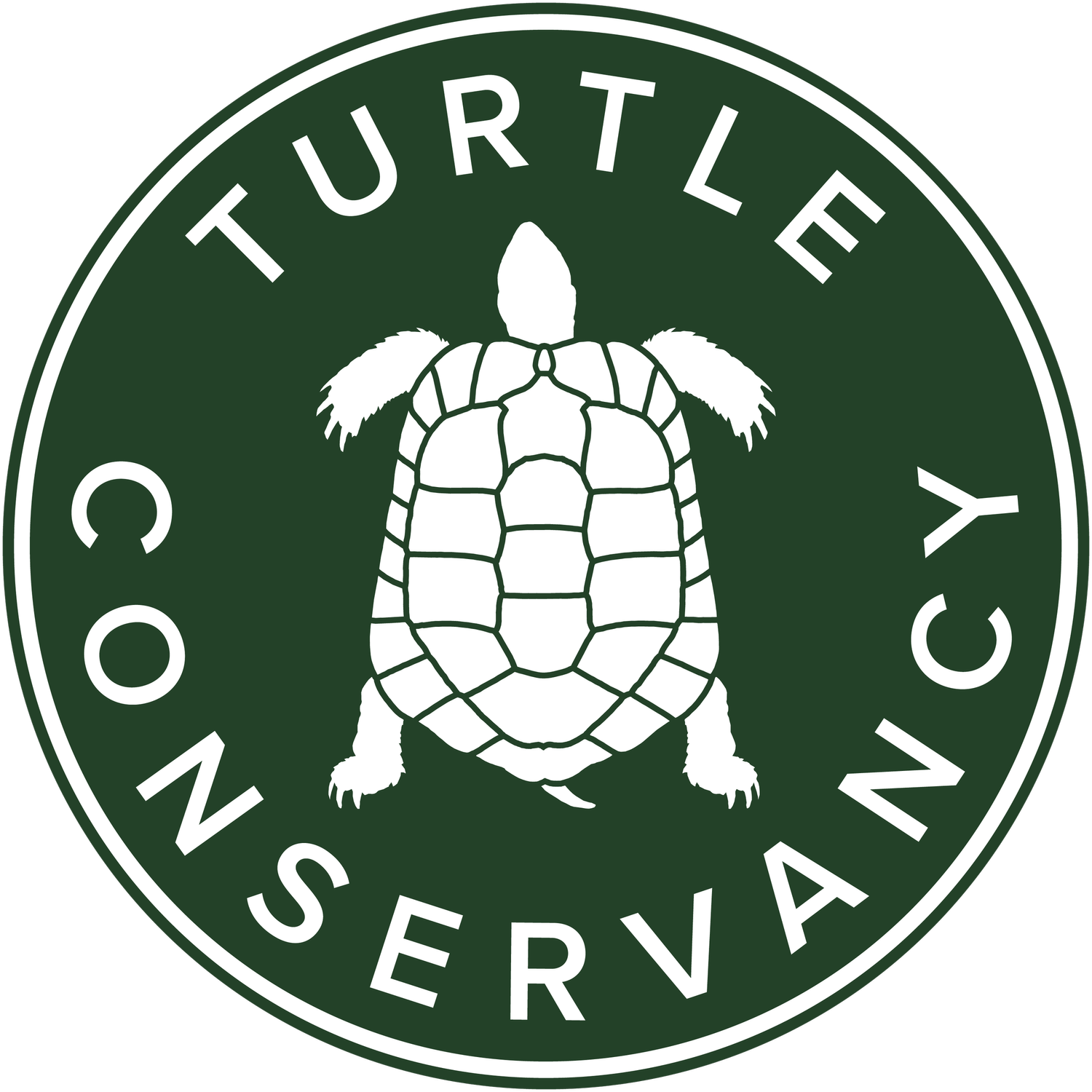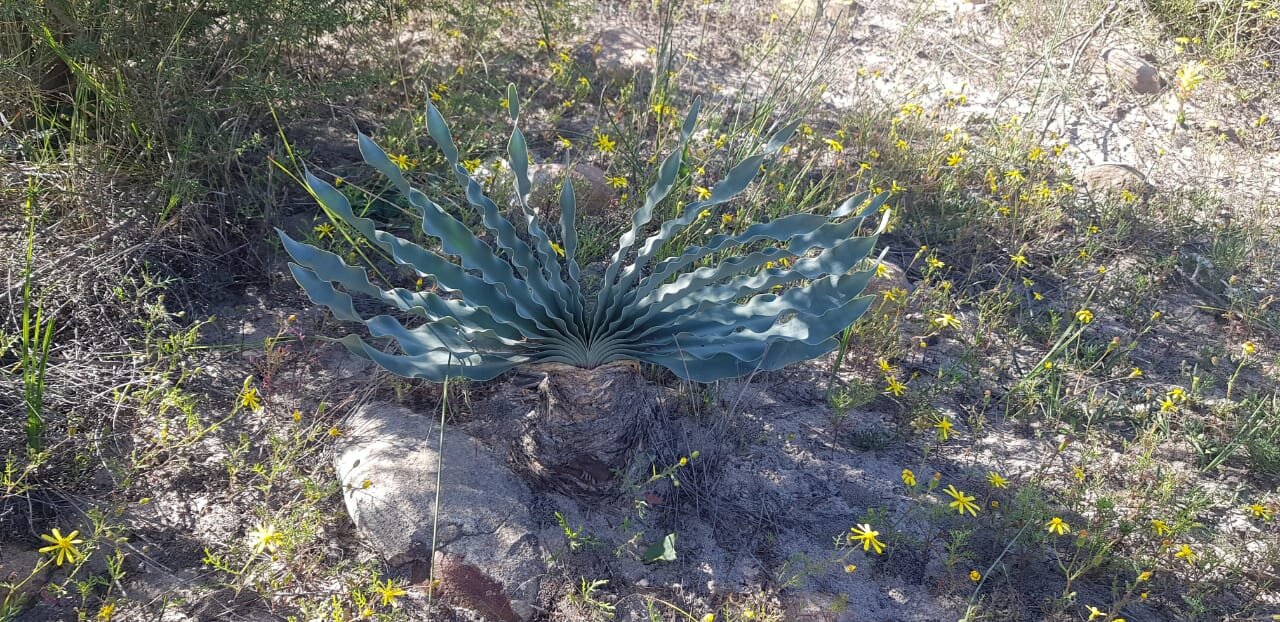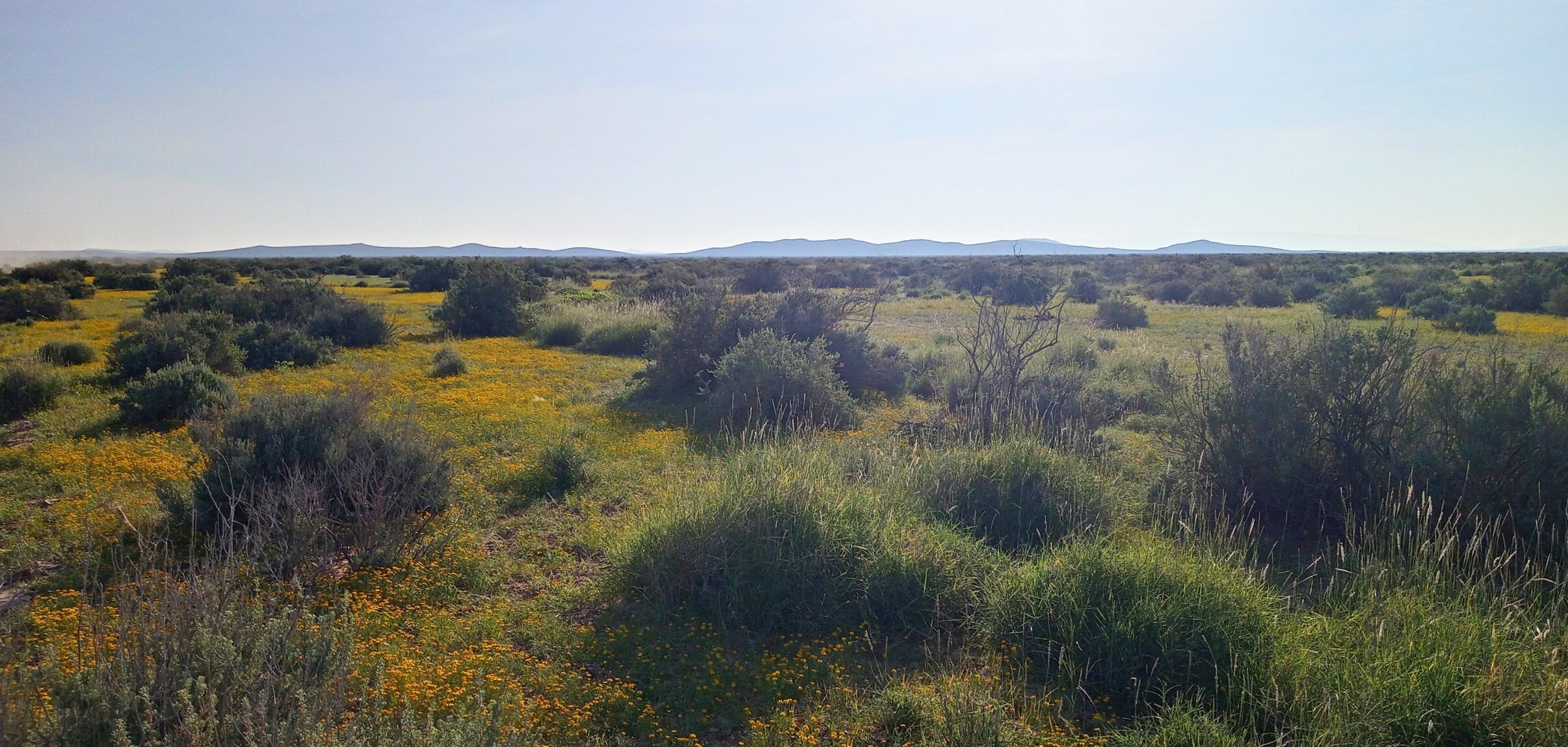
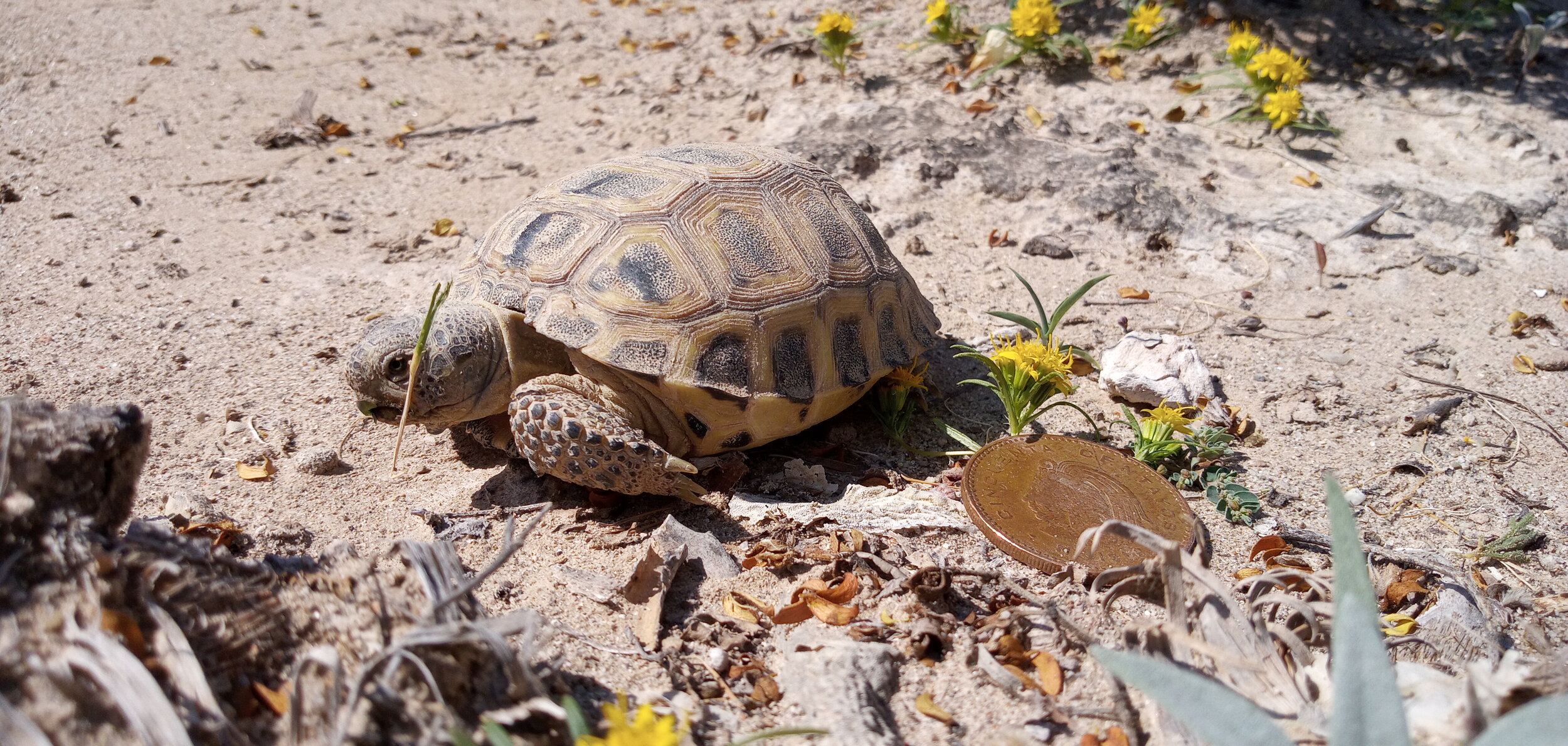
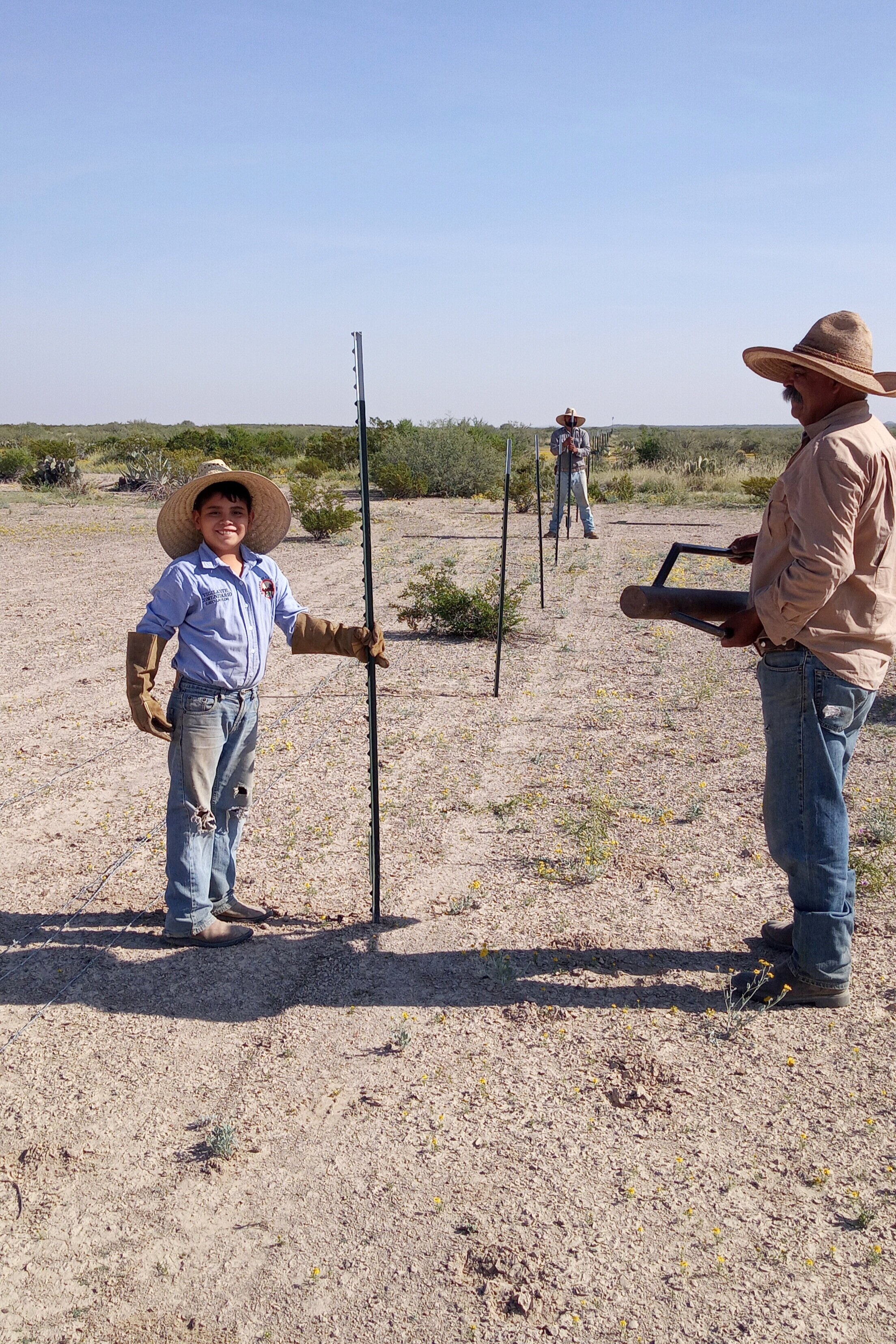
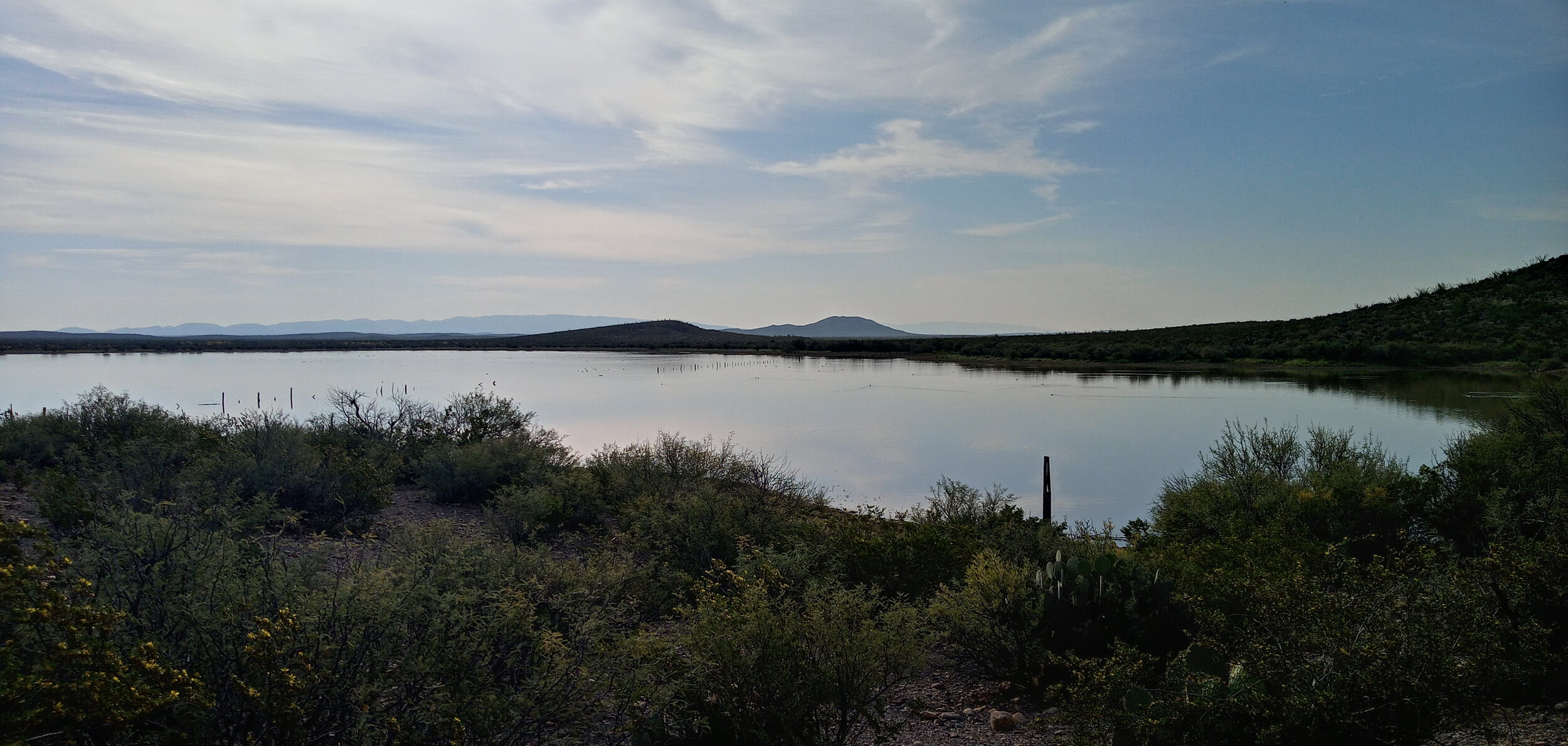

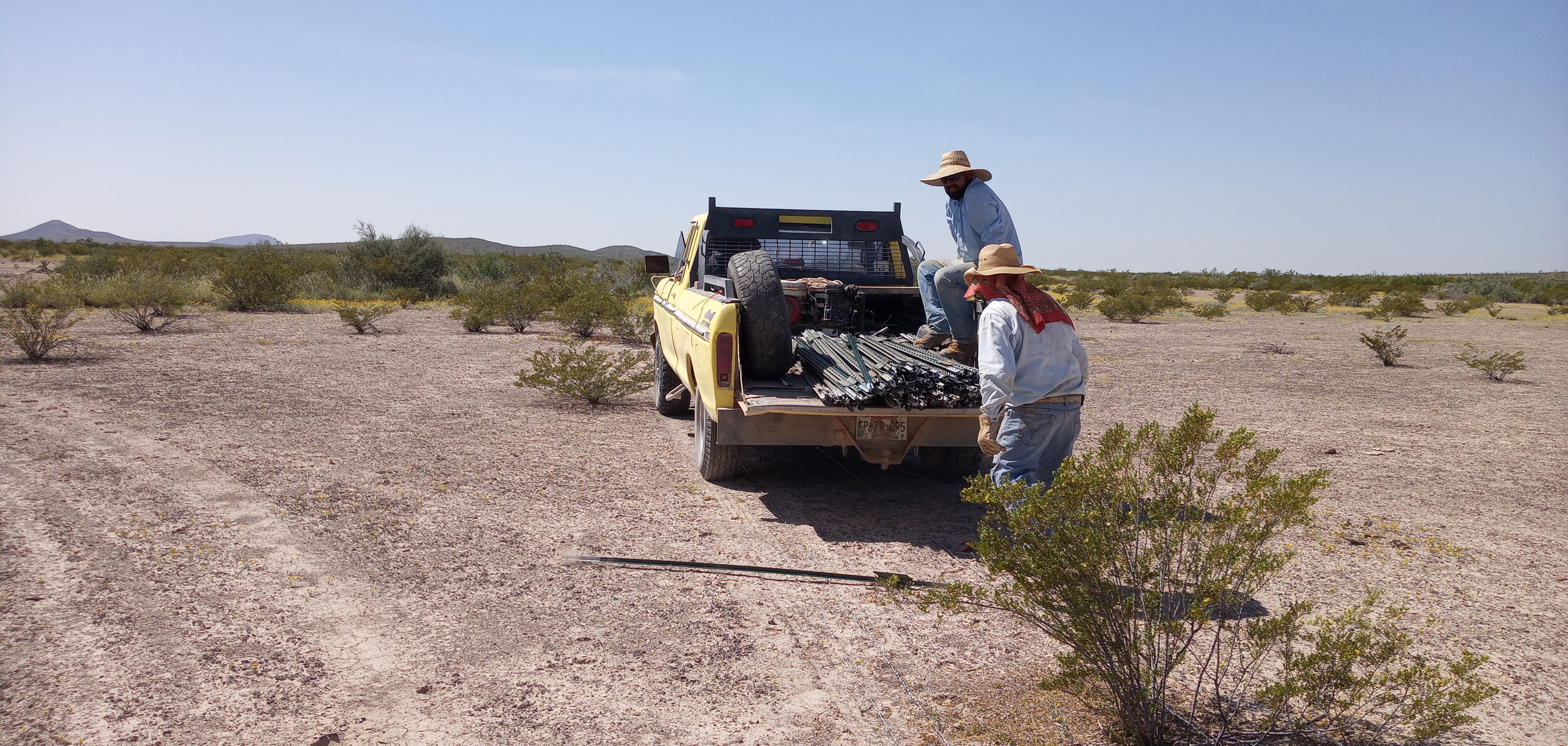
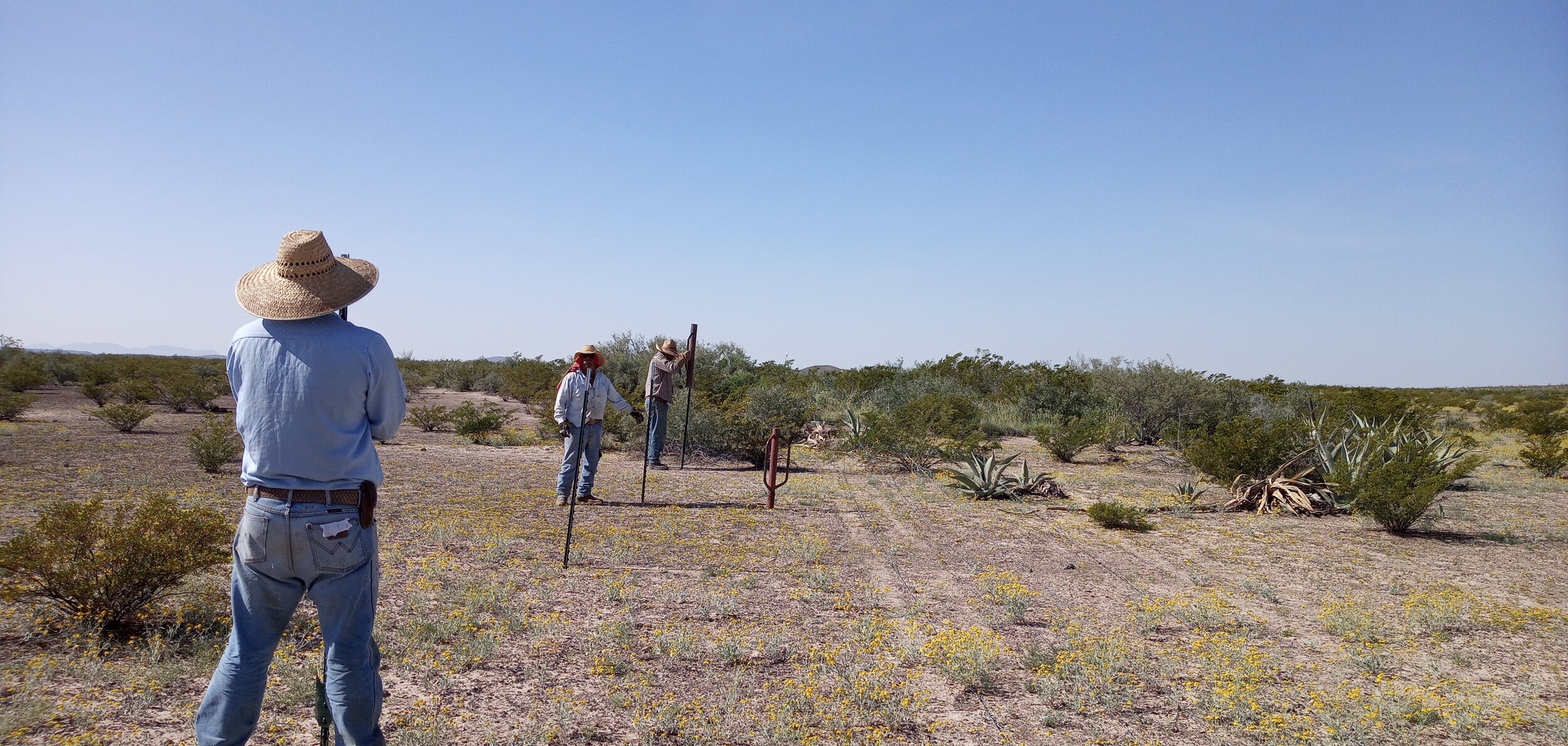
Mexico: Restorative rains in the Bolsón de Mapimí
2020 has been good for some at least! This summer brought unusually abundant rains to our 45,000+ acre Bolson Tortoise Reserve in Northern Mexico. Like all Mexican-USA Deserts, Bolson de Mapimi has a climate of scattered summer rains and dry winters. As a result of the above average rainfall, native desert flora and fauna have flourished. Bolson tortoises are out in force to graze on the vegetation and flowers. The cryptic Durango Mud Turtles (Kinosternon durangoensis) also emerged from their state of suspended animation within the dry silt and clay. They will spend the next few months eating insects and other small prey, algae and more, as well as chasing each other, mating, and nesting, and last year's eggs are hatching. Soon the moment will arrive to retreat underground again for the six to nine months of cool and dry seasons.
The large downpours also mean extensive flooding of the La Vega wash near the entrance to Rancho San Ignacio, making access to the ranch difficult. However, our dedicated team continues to manage the reserve and protect its inhabitants. Covid-19 is not widespread in the Bolson de Mapimí and its surroundings, but we continue to monitor trends to protect our staff.
New fence installation on the southeastern side of Rancho San Ignacio, along our boundary with Ejido Tlahualilo, has been completed this week. Work continues on the last section to be installed, alongside our boundary with Ejido La Flor.
South Africa: Flora—good and bad—rebounds on the Geometric Tortoise Preserve
Generous winter rainfall has renewed the fynbos shrubland habitat for the three tortoise species that reside on the Geometric Tortoise Preserve in Breede River Valley. But the rebound in vegetation is indiscriminate and alien plant species have recuperated as well, increasing the threat of fire during the summer season.
For the preserve staff this means the ongoing efforts to eradicate invasive plant species must pivot to focus heavily on clearing weeds and strengthening firebreaks. A fire would be devastating to the survival of the Geometric Tortoises (Psammobates geometricus) as the preserve holds the largest remaining population of this Critically Endangered species.
Meanwhile, our partners at the Mapula Trust have had successful releases of captive-born Geometric Tortoises at the Elandsberg Nature Reserve. And now, thanks to support from National Geographic and the Mohammed Bin Zayed Species Conservation Fund, we are making plans to build our own headstarting facility where we will be able to replicate this proven protocol.
This is a critical time for us to keep up our work to save the Geometric Tortoise. Unprecedented fires have devastated ecosystems around the world in 2019 and 2020. As we move into fire season in South Africa we need to immediately employ a full team of people to mitigate the threat of fire. To do this we urgently need support from individual donors like you to sustain our guardians program and employ local workers to stay on top of this. Please consider donating today!
